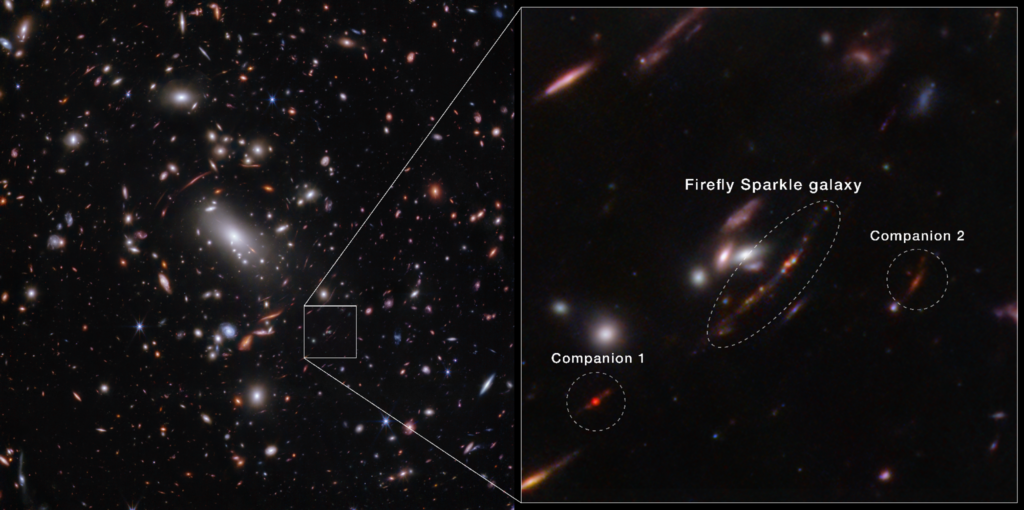Astronomers using the James Webb Telescope discovered a distant galaxy. This galaxy isn’t just a normal galaxy, it is one of the furthest galaxies we found. It was named Firefly Sparkle because the galaxy looked like many sparkling fireflies.
The galaxy called Firefly Sparkle was discovered in December of 2024 in Wellesley College in Massachusetts. Another galaxy cluster increased our ability to see Firefly Sparkle by an event called gravitational lensing, which bends light in a way that helps us see distant objects. The James Webb Telescope detected this in its infrared light, then presented the new data.
Firefly Sparkle was a gas rich galaxy formed 600 million years after the Big Bang. The galaxy’s mass is equivalent to only 10 million suns (our Milky Way weighs 1.5 trillion suns) and it is made up of 10 compact star clusters. Based on what we see so far, the galaxy spans a small 1,000 lightyears in diameter. Astronomer Lamiya Mowla of Wellesley College explained that this discovery gives us a look of what other galaxies including our Milky Way would have looked like in their early years.
“We might be witnessing this process in action,” Yoshihisa Asada, a doctoral student at Kyoto university in Kyoto, Japan said.
Two smaller galaxies are adjacent to Firefly Sparkle. These galaxies were named Firefly Best Friend and Firefly-New Best Friend and are located around 6,500 and 42,000 light-years away from Firefly Sparkle.
The James Webb Telescope’s supreme capabilities have spotted a faint, lightweight galaxy that is 13 billion light-years away that no other telescope could spot. Firefly Sparkle gave us a look at how galaxies formed 13 billion years ago. Firefly Sparkle taught us things that would alter the way we look at the universe.
Citations:
